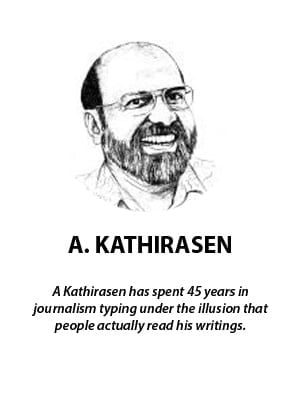
People are understandably upset and angry over the rise in the prices of imported rice and the apparent shortage of local rice in some areas.
And many are blaming the government, with agriculture and food security minister Mohamad Sabu and Malaysia’s sole rice importer Padiberas Nasional (Bernas) bearing the brunt of it.
On Oct 10, Mohamad told the Dewan Rakyat that there was sufficient rice supply to cover our needs for the next four to five months and went on to say that prices had increased because 19 countries had restricted exports abroad to give priority to their own citizens.
The question on everyone’s mind is this: Why is Malaysia not self-sufficient in rice production? Why is it dependent on other countries when it has the land, the right climate, enough water and modern technology for rice cultivation?
The price of imported rice went up by 36% on Sept 1, resulting in more consumers turning to local rice. Locally produced rice, which is price-controlled, is sold at RM2.60 per kg while imported rice, it was reported, can cost up to RM4 per kg.
Traders say local rice is a hot item and the packets do not stay long on their shelves due mainly to panic buying.
While we cannot blame the government for the rise in prices because it is a global phenomenon, we can ask whether our lack of self-sufficiency is due to poor planning or a lackadaisical attitude.
The fact is, if we produced rice for all of our needs, or if we had a healthy stockpile, we could be spared from the effects of price rises or shortages in other countries.
Titiwangsa Member of Parliament Johari Ghani was reported as saying recently that Malaysia produced only 62.6% of total demand.
Noting that our dependency on rice imports had increased in recent years, Johari said Malaysia imported 1.23 million tonnes of rice – worth RM2.67 billion – in 2022.
He went on to suggest that Malaysia emulate Vietnam which had progressed from a rice-importing country in the 1990s to one of the world’s largest rice exporters today. Malaysia, he said, could become a rice producing country if enough focus was given to it.
Actually, we should have become self-sufficient long ago as even the colonial administrators had talked about it, as did subsequent Malaysian governments.
As early as 1932, the British administrators were talking about the need for rice self-sufficiency at a conference on agriculture production.
And in April 1957, the then agriculture department assistant director E F Allen said the then Alliance government’s policy was to make Malaya self-sufficient in essential foodstuffs.
The Federation of Malaya, he said, had spent $134 million on rice imports in 1956. Laying out what needed to be done to be self-sufficient in 1980, Allen said more land should be opened up and rice varieties that provided better yields planted.
He noted that Malaya was then producing 56% of total consumption. Today we are producing 62.6%. It means after 66 years, we have, in terms of total consumption, only managed to increase production by 6.6%. That’s pathetic.
In 1962, then agriculture minister Abdul Aziz Ishak said Malaya would be self-sufficient in rice production by 1965 through double-cropping. However, the following year, the new agriculture minister, Khir Johari, said self-sufficiency could only be achieved in 1970.
The administration of Dr Mahathir Mohamad (1981-2003) concentrated on industrialisation and physical development to the detriment of agriculture. The subsequent Abdullah Ahmad Badawi administration had plans to revive agriculture but he was forced to quit office very soon when the Barisan Nasional fared badly in the general election.
However, it must be noted that not everyone in power or influence felt Malaya/Malaysia needed to be self-sufficient in rice production. There were times when some economists – including Professor Ungku Aziz – and Cabinet ministers felt it made more economic sense to import some of the rice than to be fully self-reliant.
As a journalist, I’ve been hearing about the need for rice self-sufficiency from the 1970s. This is 2023, and I’m still listening to talk about rice self-sufficiency.
The public expects elected governments to plan for the long term, in particular on matters concerning their basic needs, but it appears that governments over the years have failed to ensure food security, or at least to ensure the country is able to produce enough rice for its people.
We should also call to account those – especially senior civil servants – who were paid a salary to plan and implement programmes to increase rice self-sufficiency but failed to do so.
Let’s hope that this government will focus on raising rice production and improving the supply chain so that Malaysians won’t have to discuss about rice self-sufficiency or a shortage in another 66 years from now. - FMT
The views expressed are those of the writer and do not necessarily reflect those of MMKtT.


No comments:
Post a Comment
Note: Only a member of this blog may post a comment.